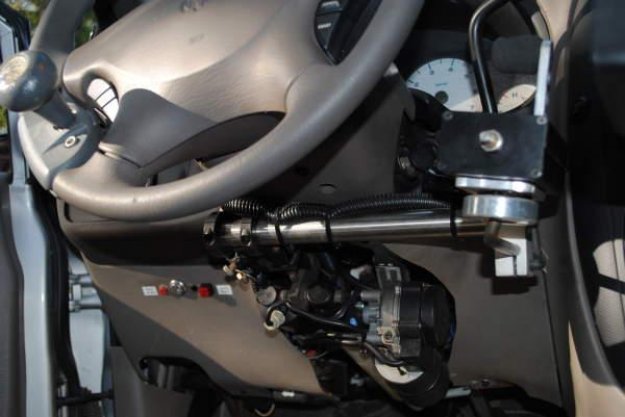What You Need To Know About Adaptive Driving Equipment
Back-Up Sensors
There are many different types of adaptive driving equipment. For instance, there is the rear view mirror camera and the back-up sensor. Back up sensors work by producing a warning sound when they sense an object behind wheelchair vans. When it comes to the aftermarket adaptive driving equipment safety items, the backtracker system is one of the most popular devices.
The rear-view mirror camera serves the same function as the back-up sensor. This device is very important when it comes to wheelchair van safety. A small camera is installed on the rear section of the vehicle. The image captured by the camera is displayed on a small screen that serves as the rear view mirror. This display allows the driver to see what is behind the vehicle and how far it is from the rear section of the vehicle. These two items are very helpful to drivers with limited neck mobility. People who can only use one hand to steer the vehicle such as those with hemiplegia also find these items very helpful.
The raintracker is another useful device. It is made by the same company that manufacturers the backtracker. This device turns on the wipers of your vehicle automatically by sensing the amount of moisture in the atmosphere. People who have problems with coordination of their arms or decreased sensation of movement will find this device very useful.
Find Out How GPS Can Help People With Disabilities
A GPS or Global Positioning System is a very important navigation tool for all drivers. Most GPS systems will give the driver turn by turn directions from where he or she is to the intended destination. Some systems can also tell the driver where the nearest filing station or motel is. Some systems come with advanced features that can provide additional information such as detours and current traffic conditions.
While GPS systems can be very helpful for people with disabilities, an evaluation should be done to determine whether or not a person is fit to use the device safely. The device can be confusing to use at first but after a while, anyone can learn to use it properly. The directions given by the device can also be confusing.
For instance, a device might instruct you to make a left turn after 53 yards. This type of information can be confusing because, it does not necessarily mean that you make the next left turn. Also, measuring distance in yards is almost impossible when you are inside a vehicle.
Ideally, you should drive through familiar neighborhoods when you install the GPS system in your vehicle so that you can familiarize yourself with its operations. Much has been said about using your phone while driving. The same applies to GPS systems. When you need to route or reroute yourself using the device, you should pullover before you activate the device. Teenage drivers should only use the device with adult supervision because they can be distracting.

















